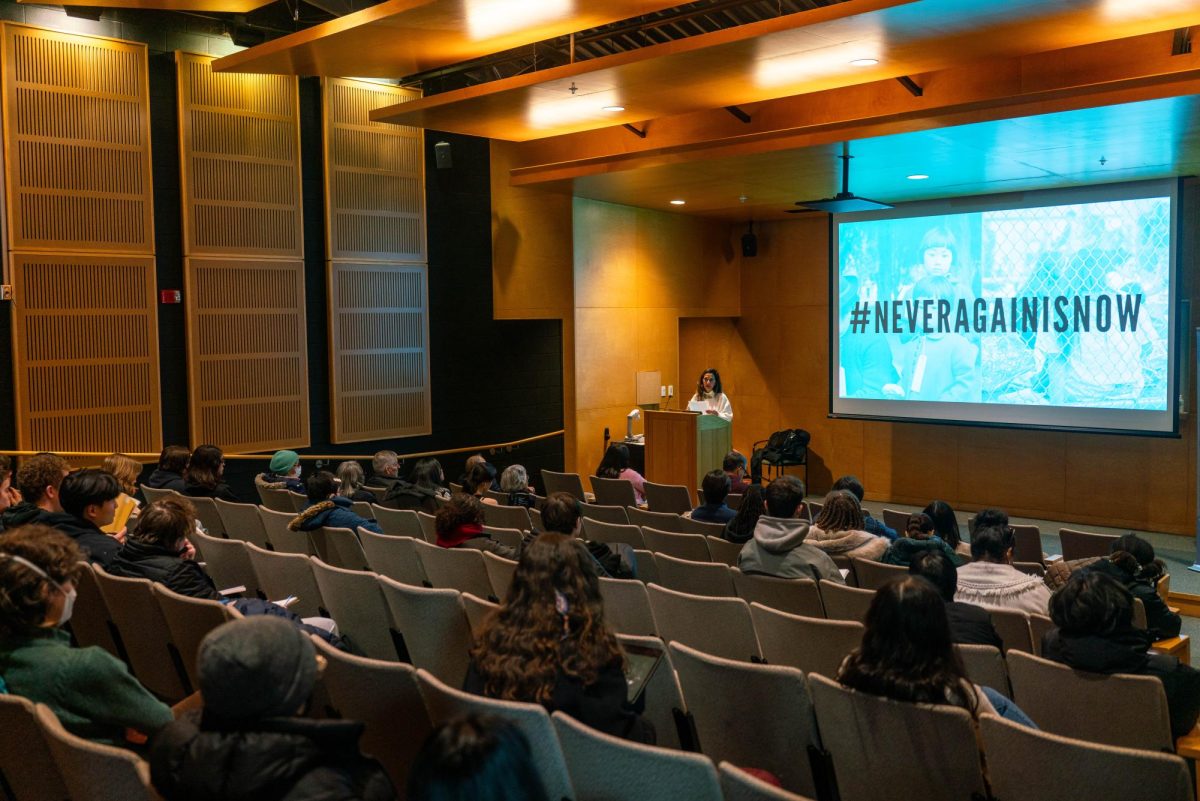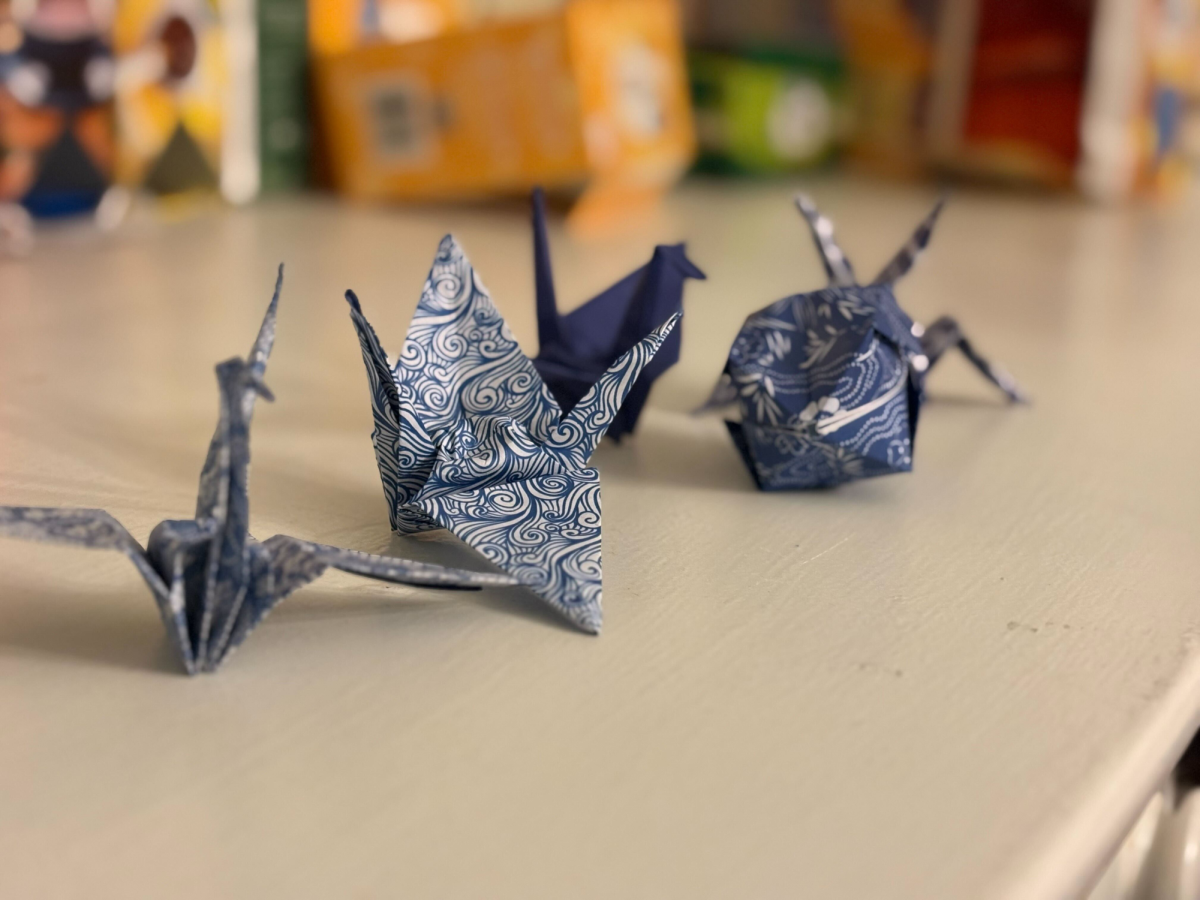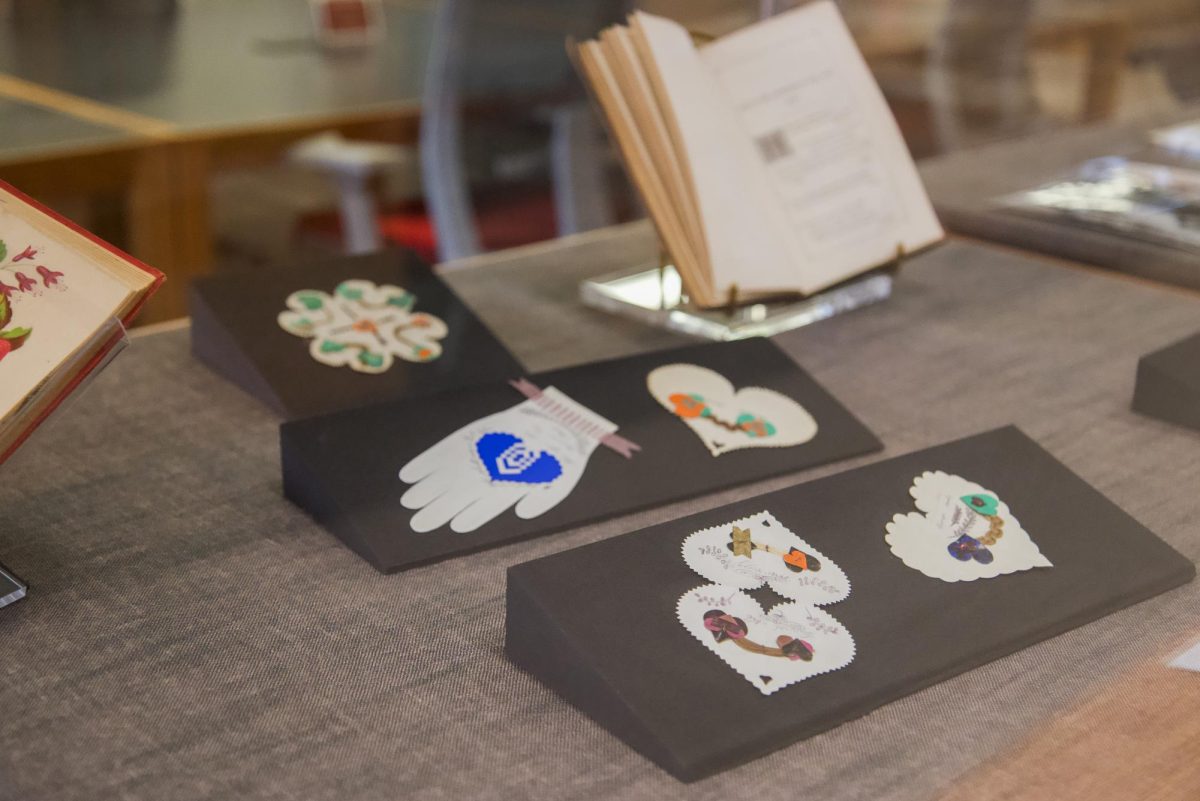The Day of Remembrance teach-in took place in Hallock Auditorium this past Thursday, covering the history of Japanese internment camps in World War II and revealing Oberlin’s role in welcoming Japanese Americans to the College.
Sam Pinedo, College second-year and the Asian, Pacific Islander, and Desi American liaison at the Multicultural Resource Commons, organized the event. At the teach-in, she stressed the importance of the Day of Remembrance, mentioning that it is an often neglected part of history.
“My great-grandparents, Kaneo and Sumiko Sakatani, were interned, so it is very important for me to honor them by putting this event on,” Pinedo wrote in an email to the Review. “Remembering these injustices will help us confront the current ones surrounding immigration in the United States.”
Assistant Professor of Comparative American Studies Aanchal Saraf provided a nuanced historical overview of Japanese American internment during WWII. She started by discussing the terminology she would use: incarceration instead of internment, concentration camps instead of relocation centers, and forced removal instead of evacuation. These new terms emphasize the unjust, inhumane, and forced nature of imprisoning Japanese Americans during WWII.
Saraf explained the various laws and acts that led up to the first mass eviction of Japanese Americans March 24, 1942 in Bainbridge Island, WA. She also talked about how life in the camps was brutal, but Japanese Americans persevered by creating schools, hospitals, and fostering the education of art and music. Despite this resilience, the toll of incarceration was immeasurable; past incarcerees faced institutional racism, and even after WWII ended, 44,000 individuals remained in the camps, the last one closing seven months after the end of the war.
Although the Civil Liberties Act was signed into law in 1988, issuing an official apology to Japanese Americans and compensating those interned, Saraf emphasized the continued need for remembrance and action. The #NeverAgainIsNow campaign — started in 2018, the 30th anniversary of the Civil Liberties Act — positions injustices against Japanese Americans in WWII in a broader civil rights perspective, aiming to unite individuals facing deportation in the first term of Trump’s presidency. He recently threatened to use the 1798 Alien Enemies Act in his second inaugural address, an act that was used in WWII to incarcerate Japanese Americans.
College Archivist Ken Grossi gave light to Oberlin’s long history since 1930 on war sentimentality and Japanese-American inclusivity both on campus and around town. Before the United States’ involvement in WWII, Oberlin College’s seventh president, Ernest Hatch Wilkins, founded the Oberlin Peace Society to push for pacifist practices in the face of brewing conflict in Europe. However, as the war came to actualization in the mid 1940s, President Wilkins asked for support for the war effort both on campus and the battlefield, providing navy divisions with education and athletic endeavors at Oberlin College. Records of the Peace Society officer elections and President Wilkins’ messages can be found well-documented in The Oberlin Review issues from the ’40s.
President Wilkins’ contributions to the war did not end there, as he was instrumental in providing admission for Japanese-American students. One such student was Kenji Okuda, OC ’45. After being incarcerated at Camp Harmony and Camp Amache, Okuda fought to gain security clearance in order to attend Oberlin, to which he had been admitted nine months prior. Okuda started at Oberlin in the spring of 1943, and was elected student body president soon after. Okuda spent his time fulfilling the duties of an emissary, providing opportunities of political education and participation through his speeches, which are available in-full in the College Archives.
It was believed that there were a total of 17 Japanese-American students who attended Oberlin College during the 1940s, but thanks to the research of Oberlin alum Cassie Guevara, OC ’13, a complete record of 40 Japanese-American Oberlin students and their biographies are available both online and at the Oberlin College Archives. These biographies highlight not only the struggles many Japanese-American students faced prior to their time at Oberlin, but also their fight against racial prejudices of fellow students on campus.
While at Oberlin, Guevara participated in other forms of honoring Japanese-American heritage on campus including Oberlin College Taiko, one of the only organizations in Ohio practicing the Japanese art form. Current members of OCT attended the talk and expressed their connection to both Guevara’s work and Oberlin College’s preservation of the history of Japanese-American heritage.
“OCT recognizes the imperative to stay connected with broader Asian-American experiences,” College second-year Adriana Hernandez said. “Education and networking are chief ways to stay connected, including this event.”
Another member, College fourth-year Kayla Kim, shared her experiences.
“I visited Manzanar camp during a vacation — the heat and desolation I saw was profound,” Kim commented. “I think Oberlin can do a better job at promoting Asian American studies — it can inform us [of] the next steps to take in advocating the history and contributions of Asian Americans in this country.”











